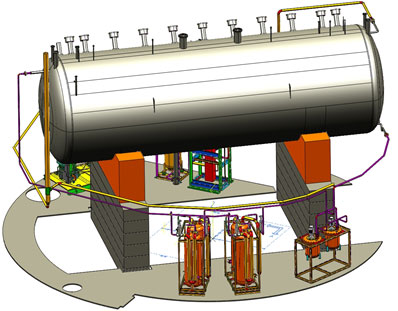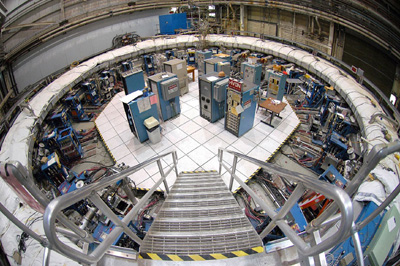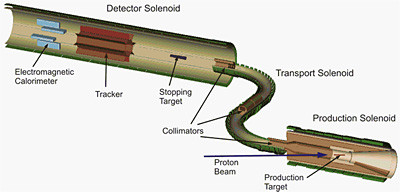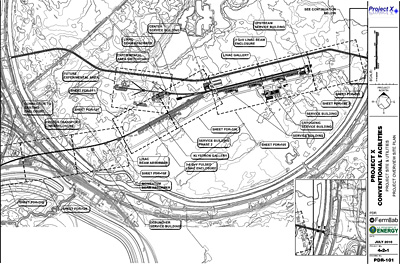Looking Ahead
Scientists will continue to analyze the data provided by the Tevatron for years to come. The shutdown also will allow Fermilab to use the buildings that were used to assemble and operate the CDF and DZero collider experiments and parts of the Antiproton Source to start new projects and research programs.
Tevatron data analysis
For the next several years, scientists of Fermilab's CDF and DZero experiments will continue to analyze Tevatron data. Both collaborations are on track to publish more papers in a single year than any year in the history of the Tevatron experiments. The number of publications produced will grow through 2012 and beyond as scientists will use better analysis techniques to squeeze more information out of their unique data sets.

Illinois Accelerator Research Center
The new Illinois Accelerator Research Center, a state-of-the-art research facility to be constructed at the CDF site, will feature a modern office building and a refurbished CDF assembly building. Scientists and engineers from Fermilab, Argonne and Illinois universities will work side by side with industrial partners to develop breakthroughs in accelerator technology and its applications in energy and environment, medicine, industry, national security and discovery science. Learn more.

MicroBooNE
The MicroBooNE experiment, which will build and operate a large, approximately 100-ton, liquid argon time projection chamber, will be assembled in the DZero building and then moved into a new experimental hall along the Booster neutrino beam line. The experiment will measure low-energy neutrino cross sections, and investigate the low-energy excess events observed by the MiniBooNE experiment. The detector serves as the necessary next step in a phased program towards the construction of massive, kiloton-range liquid argon detectors. Learn more.

Muon g-2
The Fermilab muon g-2 experiment will allow researchers to peer into the sub-atomic world of virtual particles and resolve a decade-old mystery. The project will reuse parts of the Fermilab Antiproton Source and a storage ring from Brookhaven National Laboratory to create a large number of muons to measure a fundamental property of muons known as the gyromagnetic ratio, looking for contributions from new subatomic particles and forces. Learn more.

Mu2e
By producing huge numbers of muons in a controlled environment, physicists of the Mu2e experiment hope to observe the direct conversion of muons into electrons. If they observe this process, it will provide evidence of new physics, opening up a window to the wonders of the universe. Learn more.

Project X
Project X is a proposed accelerator complex that would provide a very intense proton beam for a variety of physics experiments with kaons, muons, neutrinos and atomic nuclei. The proposed facility would provide particles at different energies. Learn more.




